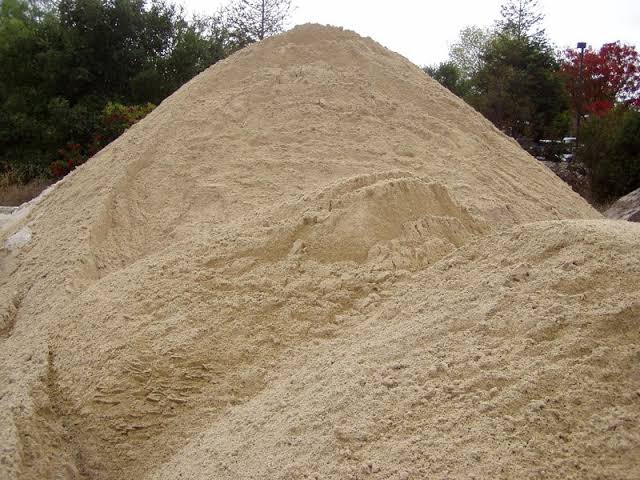SOIL AND SAND DIFFERENCE
The terms ‘sand’ and ‘soil’ are often interchanged and used synonymous with one another. Many people consider them the same, but when
scrutinized, they are quite different from each other.
What is Sand?
Sand is a granular material made of finely disintegrated rock and mineral particles, sand is the type of soil which is formed
when rocks break down from weathering and eroding over thousands and even
millions of years.
Depending on the location, sand will have different texture and
color from one location to another. Sand is made of silica, calcium
carbonate and other minerals. Sand does not hold water because it has large spaces between the particles which allow air and water to pass through more freely.
 |
| Heap of sand |
SOURCES OF SAND
Below are the sources of sand
1. Pit sand
River obtained from pits formed in the soil, this sand are
excavated to a depth of 1m to 2m to avoid entering to other strata of earth’s
crust, this sand are found as deposit in soil.
It is better material for plaster and concrete work but pit
sand should be free from clay and organic matter.
2. River sand
This sand is widely used for all purposes. It is obtained
from the banks or beds of rivers and it consists of fine rounded grains. The
presence of fine rounded grains is due to mutual attrition under the action of
water current.
The river sand is available in clean condition.
3. Sea sand
This is obtained from sea shores, it is brown in color and
has fine rounded grain.
As it is obtained from sea it contains salt which can trap
moisture from atmosphere, this cause dampness and disintegration of stricture.
USES OF SAND IN CONSTRUCTION
1. Used as ingredient of cement mortar
and cement concrete.
Sand is one of the main ingredient in cement mortar
preparation and concrete mixing due to its properties (i.e. its size, inert
material, durability).
2. Used as blinding material
Sand is used as blinding material on
hardcore before placement of concrete or other road layer (in road construction).
3. Used as decorative material.
4. It
is used for drainage and terrain preparation when making the foundation of the
structure.
What is Soil?
Soil is the loose
surface material consisting of inorganic particles and organic matter that
covers most of the land surface. Soil provides the
structural support and the source of water and nutrients for plants used in
agriculture.
Along with air and water, soil is
considered one of three major natural resources. It is made up of many things,
but the three main components are minerals that come from nearby, organic
matter that comes from the remains of plants and animals that use the soil, and
the living organisms that live in the soil,
the amount of organic matter makes the soil darker in color while the ground up
rock color depends on the bedrock and other additional rocks.
Soil is porous, it holds water, and the fine
particles that make up soil are small in size and packed together.
SOURCES OF SOIL
Most common and main source of soil
is borrow pits, where soil is excavated and tested if it fit for different
purposes.
 |
| Soil borrow pit |
- Used as the foundation
Soil is the natural foundation of all structures as all
structures rest on soil, the type and properties of soil affect the type and
size of artificial foundation of the structure
2. Used as bricks mortar
On older times most of buildings and structure were built by
using soil (clay) but even in recent times some of places in developing
countries they still use clay soil as brick mortar.
Invention and used of cement mortar reduce the uses of clay
soil as the brick mortar.
3. Used as embankment
Soil of certain properties that is PI and particle
distribution is used as embankment of railway and dams.
4. Used as backfill or a fill.
After excavation of trenches the soil excavated is returned
into the voids left as backfill to have the leveled surface.
And also the fill is used to fill the holes and used as the
one of the road layers.



Comments
Post a Comment